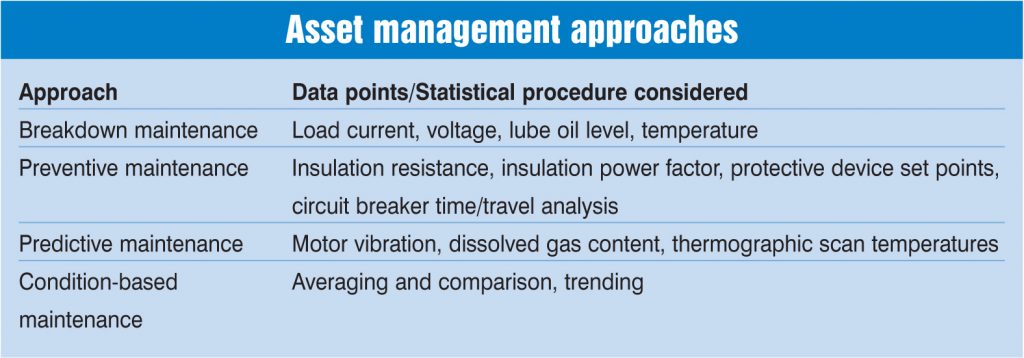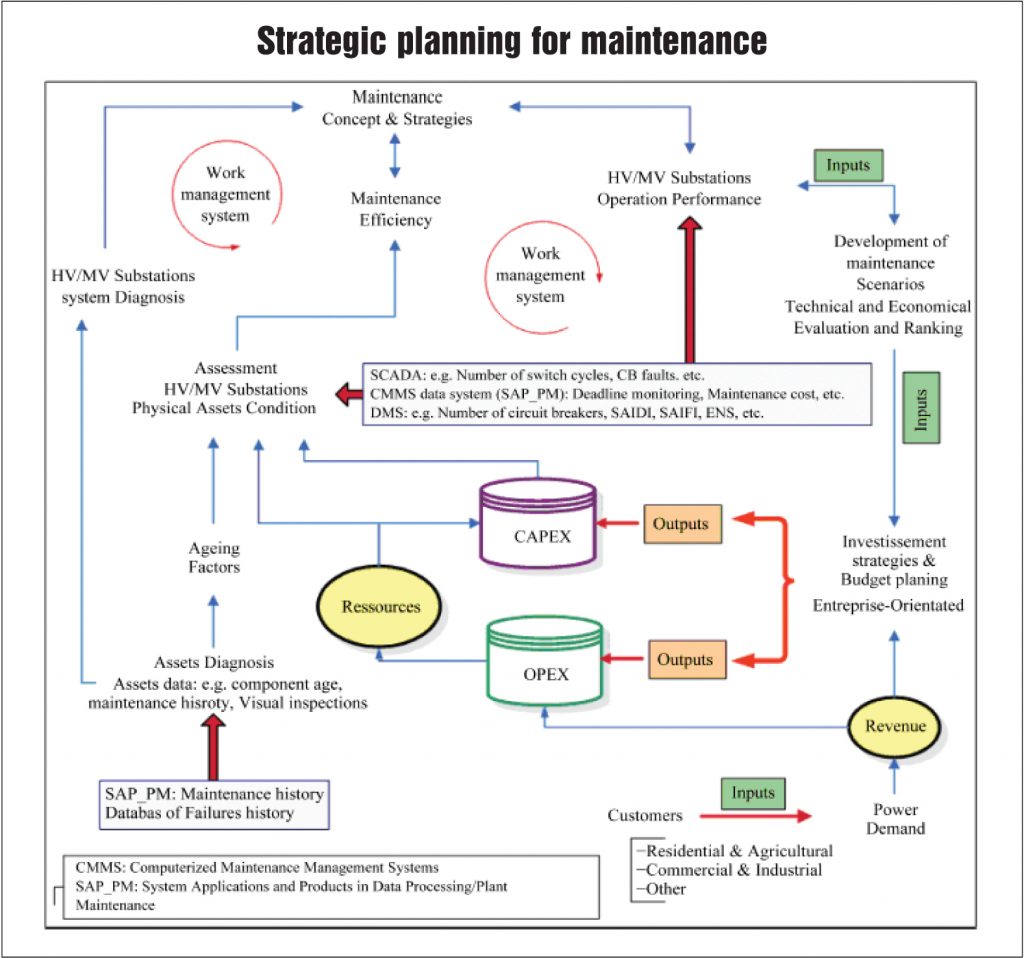
Indian power utilities are increasingly getting smarter. Significant changes are being made in the control and communication architecture of power networks in order to ensure effective integration of the growing renewable energy capacity. As part of this digitisation, assets across the power value chain are being interconnected, due to which a fault in equipment in one area can impact the functioning of equipment in another area. For repair and maintenance of these assets, utility operators have had to resort to obsolete practices owing to the lack of asset data at a centralised level. Now, however, advanced asset management solutions are emerging, which can help utilities leverage data and maximise the performance of critical capital assets for reliable and cost-effective supply of power.
Assets form the backbone of any utility. While utilities are adopting new technologies for assets in the transmission and distribution segment, the maintenance of these assets remains sub-par. There are a number of factors that affect the life cycle of an asset including inadequate design, poor specifications, lack of maintenance, ageing equipment, and dated operations and maintenance manuals. Asset management facilitates the utilisation and maintenance of assets and improves the overall operational performance of utilities. While asset management involves a combination of information technology (IT) and operational technology (OT) solutions, it is crucial to understand how OT individually provides impetus to the process of asset management. OT represents a broad category of devices, sensors and software that identify or trigger a change through monitoring or control of physical devices, processes and events on a real-time basis. Examples of OT include distribution management system, supervisory control and data acquisition (SCADA), outage management system, meters, sensors and motors.
As a utility owns both physical and non-physical assets, asset management can be of different types. It essentially involves monitoring and recording of information related to the life cycle of assets such as design, operation and health. A centralised database or a registry is used to store this information, which can be leveraged to provide actionable insights through rigorous data analysis and diagnoses. A SCADA system also functions in a similar way, allowing the system operator to monitor data on a real-time basis to ensure the smooth functioning of all processes. Even though asset management and SCADA are distinct systems that have evolved separately, there are commonalities between the two systems. A modern SCADA system links the information of all the assets to provide value addition to the system operator and eliminates the information gap between operation and optimisation. The two systems can therefore complement each other to improve operational efficiency and accelerate decision-making.
Types of maintenance practices
There are essentially four types of maintenance practices – corrective, preventive, predictive and proactive. Of these, corrective maintenance or breakdown maintenance has been the most commonly followed practice. It is based on the principle of “run it until it breaks”, that is, assets are repaired only when they stop functioning. Mostly, utilities preferred to bear the cost of repair rather than investing in a preventive maintenance programme. With time, however, preventive maintenance has gained acceptance as a better approach, which involves comprehensive test routines for the assets. However, it is a time-consuming and capital-intensive exercise that needs to be undertaken on an annual basis.
Utilities have now transitioned to predictive maintenance, which is a smarter fact-based approach and utilises advanced OT applications. The approach analyses the current performance cycle to understand the cause-symptom-effect relationship between assets and their parameters. Based on the predictions and a comparison of current parameters with the industry norms, it is decided whether the assets need corrective action.
In addition, there is condition-based maintenance, which is similar to predictive maintenance but uses more analytics. It involves the identification of failures much before their occurrence using online and offline test date, improving equipment reliability and reducing maintenance costs. However, it comes with its own set of concerns such as high installation costs and an element of randomness in maintenance operations due to unpredictable maintenance periods.
 Condition-based maintenance techniques
Condition-based maintenance techniques
Under condition-based maintenance, some of the basic techniques followed are ultrasonic testing, thermographic survey and oil analysis. These techniques are used for separate components and equipment such as transmission cables, switchgear and transformers. A thermographic survey involves temperature profiling of a surface or a point with the objective to identify hotspots leading to heat loss and breakdown or failure of equipment. For example, a temperature rise of 20 °C-50 °C is serious and calls for predictive maintenance. A temperature above 50 °C falls under the critical category and requires immediate action. Thermographic surveys can significantly reduce distribution transformer losses and help avoid overheating in electrical connections.
Ultrasonic testing is another advanced technique that is used for electrical inspection to detect discharge/ionisation in switchgear. Discharges such as corona and arcing produce ultrasonic frequency but cannot be identified by infrared technology. Ultrasonic testing helps minimise switchgear failure and thereby the unscheduled downtime.
For transformers, oil analysis is a strategic tool to assess the health of lubricants and the contamination present in them. It is an accepted industry practice, which maximises the life expectancy of a transformer in a cost-effective way. Lastly, to monitor the health and status of the transmission cable, a common technique deployed is signature analysis. If any section of a cable has been termed as faulty, a low voltage high frequency signal is injected and the signature of that cable is captured. The signatures are then downloaded with the help of software and the waveforms are then further analysed to detect joint clusters or any other abnormality. It identifies the accurate sick length of the cable along with its location and enables its replacement, resulting in considerable capital expenditure savings.
Utilities in India are yet to proactively adopt condition-based maintenance strategies. System operators and power producers should not underestimate the economic and operational benefits of an intelligent maintenance programme. While advanced techniques may require a high capital investment in the initial phase, in the long run, they will only ease operations by reducing unwarranted expenditure incurred in the repair of equipment. Thus, state-of-the-art technologies should be adopted to ensure asset health and help the utility maintain a competitive edge in the industry.
Based on a presentation by Kunal Pareek, AGM, Tata Power Delhi Distribution Limited, at a recent Power Line conference

